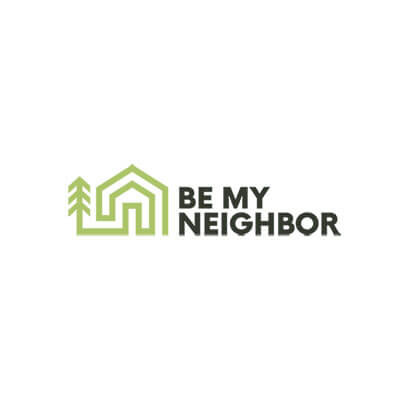
Unlocking Equity: Cash-Out Refinance Guide for Homeowners
Buying a home is one of the biggest investments you’ll ever make. To keep your home comfortable and up-to-date, you might consider renovations and repairs. However, building up the necessary savings can be challenging. One solution is a cash-out refinance, unlocking equity from your home for various needs.
What Is a Cash-Out Refinance?
As you pay down your mortgage, you build equity in your home. Equity is the difference between your home’s current market value and the amount you owe on your mortgage. You can build equity in two ways:
- Home Value Increase: The value of your home increases over time.
- Paying Down Principal: Regular mortgage payments reduce the principal balance of your loan.
How Cash-Out Refinance Works
A cash-out refinance replaces your existing mortgage with a new, larger loan. The new loan pays off your old mortgage, and you receive the difference in cash. Unlike a second mortgage, a cash-out refinance does not add another monthly payment. Instead, it extends or modifies your existing mortgage terms.
Benefits of a Cash-Out Refinance
Home Improvements and Repairs
One of the primary uses for a cash-out refinance is funding home improvements and repairs. By reinvesting in your home, you can increase its value and make it more enjoyable to live in. Examples include:
- Kitchen and bathroom remodels
- Roof repairs or replacements
- Landscaping and exterior upgrades
Debt Consolidation
A cash-out refinance can also help you consolidate high-interest debts. By using your home’s equity to pay off credit cards, personal loans, or other debts, you can:
- Lower your overall interest rate
- Simplify your finances with a single monthly payment
- Potentially improve your credit score
Lower Interest Rates
Compared to credit cards and personal loans, mortgages typically have lower interest rates. Refinancing your mortgage at a lower rate can save you thousands of dollars over the life of the loan.
Access to Liquid Funds
Whether you need to cover unexpected expenses, pay for education, or invest in other opportunities, a cash-out refinance provides liquid funds. This flexibility can be a significant advantage when managing your financial needs.
How Much Cash Can You Get?
Home Appraisal
To determine how much you can borrow, your home will need to be appraised. Lenders typically allow you to borrow up to 80% of your home’s appraised value.
For example, if your home is worth $300,000 and you owe $150,000, you could potentially borrow up to $240,000 (80% of $300,000), minus your current mortgage balance, leaving you with $90,000 in cash.
VA Cash-Out Refinance
If you qualify for a VA loan, you might be able to borrow up to 100% of your home’s value, offering even more financial flexibility. Check out our article on VA loan refinance options to learn more.
Using a Refinance Calculator to Estimate Your Savings
A refinance calculator can help you estimate how a cash-out refinance will impact your mortgage rates and monthly payments.
By inputting your current loan details and the amount you wish to borrow, you can see potential savings and determine if refinancing makes financial sense for you.
Click here to access our free refinance calculator.
The Cash-Out Refinance Process
Step-by-Step Guide
- Check Requirements
- Credit Score: Generally, a minimum credit score of 580 is required, but higher scores may offer better terms.
- Debt-to-Income Ratio (DTI): Most lenders prefer a DTI of 50% or lower.
- Equity: Ensure you have sufficient equity in your home to meet lender requirements.
- Determine Your Cash Needs
- Assess how much money you need for home improvements, debt consolidation, or other expenses.
- Obtain estimates from contractors or review your financial statements to ensure you borrow the right amount.
- Apply Through Your Lender
- Submit an application with necessary documentation, such as bank statements, W-2s, and pay stubs.
- Wait for your lender’s approval and follow their guidance through the closing process.
- Close the Loan
- Attend the closing meeting to finalize the refinance.
- Pay closing costs, which may include appraisal fees, credit report fees, and attorney fees.
- Receive Your Funds
- After closing, you’ll receive your cash, usually within a few days.
TL;DR
- Financial Flexibility A cash-out refinance provides the funds you need to achieve various financial goals without taking on new debt.
- Potential Savings By securing a lower interest rate, you can save money on interest payments and potentially reduce your monthly mortgage payment.
- Improved Home Value Investing in home improvements can increase your property’s value, providing long-term financial benefits.
- Things to Consider Before Applying
- Equity Requirements Ensure you have enough equity in your home to meet lender requirements and achieve your financial goals.
- Closing Costs Be prepared to pay closing costs, which can impact the overall savings of your refinance.
- Loan Term Changes Understand that refinancing will change your loan terms, potentially extending your repayment period or altering your monthly payment.
A cash-out refinance is a powerful financial tool for homeowners looking to leverage their home’s equity. Whether you want to fund home improvements, consolidate debt, or cover unexpected expenses, a cash-out refinance offers flexibility and potential savings.
If you’re considering a cash-out refinance or have specific questions about how it could work for your situation, don’t hesitate to reach out to our team. We’re licensed in multiple states and ready to help you navigate your mortgage options effectively.
Frequently Asked Questions (FAQs) About Cash-Out Refinances
What is a cash-out refinance?
A cash-out refinance is a mortgage refinancing option where you take out a new, larger mortgage to replace your existing one.
The new mortgage pays off your old loan, and you receive the difference in cash, which can be used for various expenses like home improvements, debt consolidation, or other financial needs.
How much cash can I get from a cash-out refinance?
The amount you can borrow depends on your home’s appraised value and your existing mortgage balance. Typically, lenders allow you to borrow up to 80% of your home’s value.
For example, if your home is worth $300,000 and you owe $150,000, you could potentially get up to $90,000 in cash.
What are the benefits of unlocking equity?
- Home improvements and repairs: Use the cash to enhance your home’s value and comfort.
- Debt consolidation: Pay off high-interest debts and simplify your finances.
- Lower interest rates: Secure a lower mortgage rate compared to other loans.
- Access to liquid funds: Cover unexpected expenses or invest in other opportunities.
What are the requirements for a cash-out refinance?
- Credit Score: Generally, a minimum score of 580, but higher scores may offer better terms.
- Debt-to-Income Ratio (DTI): Most lenders prefer a DTI of 50% or lower.
- Equity: Sufficient equity in your home, typically 20% or more, depending on the lender.
What are the closing costs for a cash-out refinance?
Closing costs are similar to those of your original mortgage and can include appraisal fees, credit report fees, and attorney fees. These costs can impact the overall savings of your refinance, so it’s essential to consider them in your financial planning.
How does the cash-out refinance process work?
- Check Requirements: Ensure you meet credit score, DTI, and equity requirements.
- Determine Your Cash Needs: Assess how much money you need and for what purpose.
- Apply Through Your Lender: Submit your application and required documentation.
- Close the Loan: Attend the closing meeting, pay closing costs, and finalize the refinance.
- Receive Your Funds: Get your cash within a few days after closing.
Can I use a cash-out refinance to pay off debt?
Yes, one of the significant benefits of a cash-out refinance is the ability to consolidate high-interest debts, such as credit cards or personal loans, into a single, lower-interest mortgage payment.
Will a cash-out refinance affect my monthly mortgage payment?
In most cases, your monthly mortgage payment will increase because you’re borrowing more than your existing mortgage balance. However, if you secure a lower interest rate, your payment may stay the same or even decrease.
What are the risks of a cash-out refinance?
- Increased Debt: You’re taking on more debt, which could be risky if your financial situation changes.
- Closing Costs: These can be significant and impact your overall savings.
- Loan Term Changes: Refinancing will alter your loan terms, potentially extending your repayment period.
How long does the cash-out refinance process take?
The process typically takes 30 to 60 days from application to receiving your funds. This timeline includes application, appraisal, underwriting, and closing.
Is a cash-out refinance a good idea?
A cash-out refinance can be an excellent option for homeowners who need cash and have significant equity in their home. It offers lower interest rates compared to other loans and can be used for various purposes, such as home improvements or debt consolidation. However, it’s crucial to review your financial situation and consult with a lender to ensure it’s the right choice for you.
